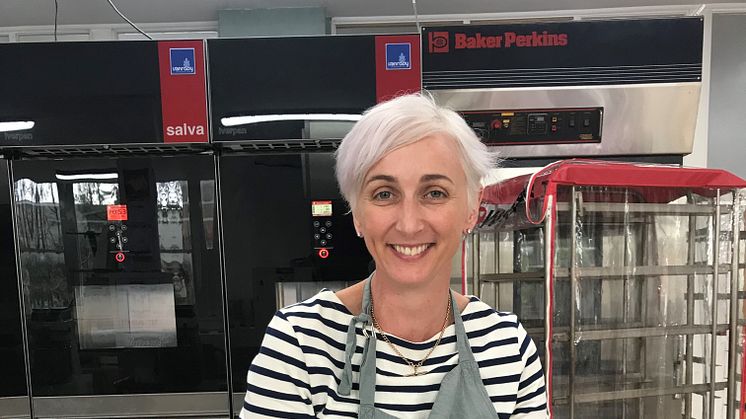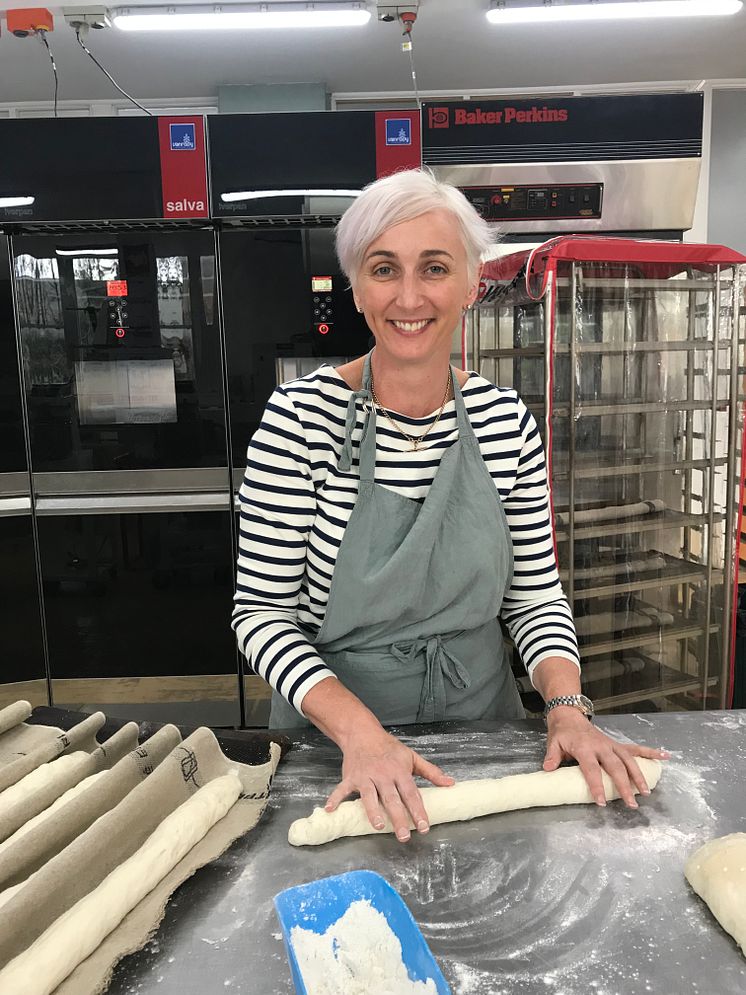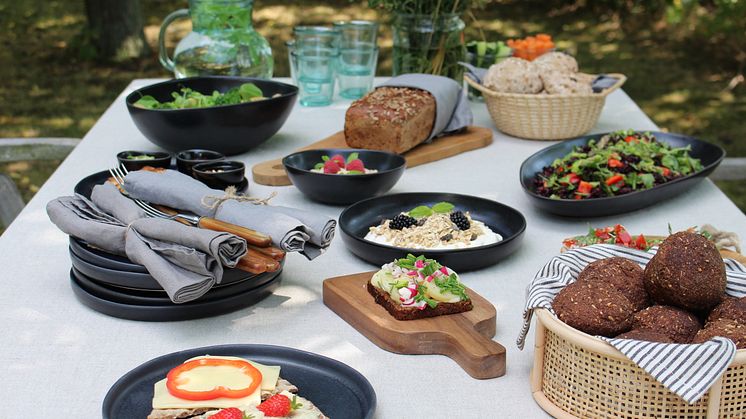
Nyhed -
Til kamp for klimaet - mød Dr. Sara Grafenauer fra Australien
Eating a climate friendly diet is more relevant than ever before. The Danish Official Dietary guidelines recommending we eat less meat and more whole grains and legumes, greens and vegetables. The Grains & Legumes Nutrition Council (GLNC) in Australia is a not-for-profit company limited by guarantee and a recognized health promotion charity. GLNC provides a platform for organizations from across the grains and legumes value chain that have a pre-competitive interest in promoting the health and nutrition benefits of grains and legumes. Their mission is to promote grains & legumes as part of a balanced diet through evidence-based information, while supporting the industry to benefit all Australians. We caught up with Dr. Sara Grafenauer, General Manager for GLNC, to learn more about how they work to increase grain and legume intake in a world where climate change features high on the world’s agenda.
- When and why was the GLNC established? How do you work to increase grains and legumes consumption in Australia? The Grains & Legumes Nutrition Council (GLNC) was originally called Go Grains, and was established in the mid 1990’s to help promote the grains and legumes categories on behalf of industry. GLNC promotes simple messaging to consumers and healthcare professionals, focusing on the specific nutrition and health benefits of whole grains and legumes and utilizing a variety of platforms to promote messaging.
- How do you engage with industry to support them? We have a group of contributing companies who support our work across four key pillars, Evidence, Market Insights, Industry Engagement and Community Engagement. In turn, GLNC supports their businesses providing advice on claims, and more recently certifying products regarding the level of whole grain. Our research of the food supply supports their businesses with up-to-date advice on competitor products, claims and trends.
- Is it common among Australians, that grains and legumes are among the most climate-friendly food?Climate and sustainability issues are becoming top-of-mind issues for Australians. There is a general acknowledgement that grain foods are climate friendly as they rely on rainfall – and in combination with legumes, which help to maintain the condition of the soil. Biodiversity is an issue, however many farmers consider themselves guardians of the land and work with experts to maintain the land they use. Increasingly, sustainability and measurement of sustainability impacts will become more important as proof of the foods that are produced. There is a great deal of work to be done in this area.
- Which communication/marketing initiatives have worked well in Australia? (Creating awareness and consumption of grains and legumes) GLNC works to drive awareness of grains, particularly whole grains and legumes among consumers, creating demand and through evidence-based approaches to help guide industry, demonstrating the growth in grains and legumes, product positioning and food trends. We run two larger campaigns, one in mid-June, Whole Grain Week, and as school returns in February, Bring Back the Sandwich. A range of mini campaigns support this messaging in between and are aligned with seasonality and key events around Christmas and other national and global promotions. Relevant and timely themes like home baking and a range of classic and innovative new recipes ensure our messaging is always well received. All campaigns are designed to easily demonstrate how consumers can enjoy more whole grains and legumes, rather than just telling them what to do with their diet.
- What is the biggest challenge you face in increasing the grains and legumes intake? All consumers are motivated by different factors. While a proportion are driven by good health, the consumption of discretionary foods makes up 35% of the energy in the diet from our last National Nutrition Survey (2011-12). The campaigns GLNC runs annually commenced in 2018, so we are unable to definitively say that we have influenced consumption, but we now have well over 1000 whole grain products in the market registered with GLNC, which is a twofold increase since 2017. Our consumer research points to some basic elements which may be barriers to consumption, habit, taste, cooking time and cost, although most of these could be explained and proven incorrect. In Australia, there has been a very effective fruit and vegetable campaign, where consumers know the amount they should be eating, yet do not necessarily follow this advice.
- What is the biggest force/opportunity you have for increasing grain and legumes intake?Recommendations in the Australian Dietary Guidelines for grain foods appear vague, with the suggestion to consume mostly whole grain, giving the impression that refined flour and other products are satisfactory. Similarly, with legumes, Dietary Guidelines seem to add them as an afterthought, with no specific recommendation for daily or weekly consumption. Further confusion may be created due to the mention of legumes as both a vegetable and as a meat alternative. We are currently researching the messaging used to potentially recommend simplified wording as part of the revision to Dietary Guidelines. We particularly like the suggestion by the Danish to ‘choose whole grains’, clarifying this easy consumer choice.
- Have you seen any changes in the ways consumers behave during the pandemic? In Australia, sales of canned foods like legumes and soups and dried legumes and flour increased during the lockdown period. Bread was also often in short supply and consumers stocked their pantries with breakfast cereals. After Australia’s first lockdown in the first half of 2020, GLNC published a paper on the variety of flour products in the market due to the increase in home baking, bread making and increasing interest in sourdough recipes online.
- What is your best advice to increase grains and legumes in your daily diet? The normal Australian dietary pattern is very receptive to grain foods as we commonly consume cereal grains at breakfast and as a sandwich at lunch, with most school children taking a lunch from home. These are ideal meals for targeting whole grain consumption, with a simple swap to a whole grain breakfast cereal or wholemeal bread. Legumes can be used in meals to break up meat consumption across the week, in soups or added to meat dishes to help reduce meat consumption. Plant-based meat alternatives are very much on trend, and it’s surprisingly simple to create veggie burgers from whole legumes and whole grains – easy recipes like this are an ideal way to capture younger, health-conscious consumers.
- What has surprised you the most – working with grains and legumes? As a qualified Dietitian, it surprises me that more people are not eating legumes regularly. They’re an amazing food option. Legumes help extend meat dishes economically, are a convenient side dish, a great addition to roasted vegetables and mix well into dips and burgers s. Amazingly, legumes like chickpeas, black beans and lentils can all be made into sweet options like biscuits, slices and brownies, boosting the dietary fibre of our most loved sweet dishes too.
- What is your next goal in GLNC? GLNCs goal is to gain more political-level attention for the recent healthcare economics work with whole grain where we’ve demonstrated a potential saving of $1.4 billion on Type 2 Diabetes and Cardiovascular Disease. We hope this groundbreaking work will result in simplified Dietary Guidelines.



